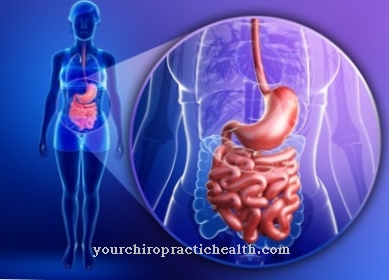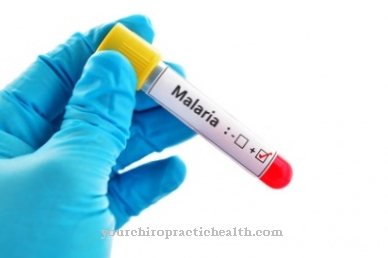A mental illness can make the life of those affected and relatives very difficult. But that developed a few decades ago Haloperidol can help.
What is haloperidol?

Haloperidol is one of the highly potent, i.e. the most powerful drugs in the group of neuroleptics. Neuroleptics or antipsychotics are psychotropic drugs that have a sedating, i.e. calming effect that counteracts the loss of reality of the mentally ill.
Haloperidol is one of the butyphenones and is used in acute states of excitement such as manic phases or acute and chronic schizophrenic forms of illness.
Pharmacological effect
Haloperidol has about fifty times more antipsychotic effects than previous drugs like chlorpromazine. It is able to block some dopamine receptors. In the course of treatment with haloperidol, muscarinic and adrenergic receptors are blocked.
As with all neuroleptics, a distinction is made between acute and long-term effects: The primary effect is that haloperidol sedates - the patient improves the ability to express himself, which is not a matter of course in states of excitement. The antipsychotic effect only occurs a few days to weeks after initial application - then symptoms of acute mania or schizophrenia are relieved.
Compared to blood, haloperidol accumulates twenty times more in the brain and in other organs. With the discontinuation of haloperidol, the brain concentration drops only slowly, which means that the side effects of haloperidol also only decrease slowly after discontinuation.
Medical application & use
Furthermore works Haloperidol also anxiety-relieving. The patients are generally more balanced during the treatment and the restlessness of various clinical pictures is moderated. The delusions decrease with the administration of haloperidol - thinking and ego disorders are alleviated. The mental excitement and emotional tension decrease in the mentally ill when haloperidol is administered. Morbid moods or increases in drive, as is common with bipolar illness, are also alleviated with haloperidol.
In Germany, Haloperidol is approved for the treatment of acute and chronic manifestations of schizophrenia, organically caused psychoses, for the treatment of acute manias and psychomotor states of excitement.
Explanation: Psychoses are severe mental disorders that are associated with a loss of reality. Manias are affective disorders, i.e. disorders of mood and drive, combined with the feeling of needing almost no sleep and of being extremely energetic. Haloperidol is primarily used for sedation, but it is also used prophylactically to prevent relapses in all the diseases just described. Another area of application for haloperidol are tic diseases such as Tourette's syndrome.
In Switzerland, haloperidol is approved for restlessness caused by brain sclerosis (these occur in the context of severe circulatory disorders of the brain), oligophrenia (intellectual disability in connection with mental illness) and as an accompanying medication for alcohol withdrawal. It can also be used to relieve pain associated with chronic pain caused by various ailments.
How is Haloperidol used?
Haloperidol is administered orally in the form of tablets or drops or intravenously and intramuscularly, with the patient being injected with the agent - and this usually in depot form. However, intravenous administration is a delicate matter, and cardiac side effects can occur. This is why constant ECG monitoring of the patient is necessary.
You can find your medication here
➔ Medicines to calm down and strengthen nervesRisks & side effects
Side effects or long-term effects from taking or injecting Haloperidol are for example late dyskinesia, i.e. swallowing or throat cramps, lumpy language, irregular movements, motor disorders, etc. - there can also be twitching or involuntary smacking or chewing movements.
As part of the haloperidol administration, patients usually suffer from severe fatigue, movement and sitting restlessness. The extrapyramidal syndrome can also occur - this is understood to mean an increase or decrease in movements in connection with a changed state of tension in the muscles. Hypotension is also a possible side effect of haloperidol therapy.
Other side effects or long-term effects of haloperidol are conduction disorders such as cardiac arrhythmias, lighter forms often go unnoticed and therefore untreated, with more severe forms it can lead to a slower heartbeat up to cardiac arrest - then a pacemaker is required for the patient. Speech disorders can occur during or after haloperidol therapy. Hunger and weight gain are also commonplace when taking haloperidol.
In general, it can be said that the vegetative side effects are rather negligible, while the main problem lies in influencing the motor skills. These symptoms, which are also reminiscent of Parkinson's disease, are usually reversible after taking haloperidol and depend on the dose administered. While administering haloperidol, side effects can be cushioned by anti-parkinsonian substances.

















.jpg)







.jpg)


